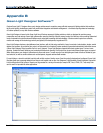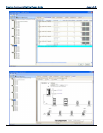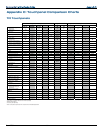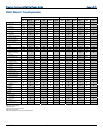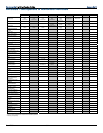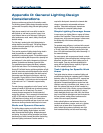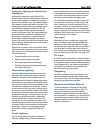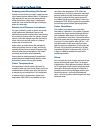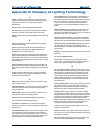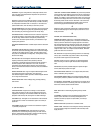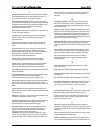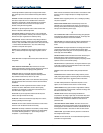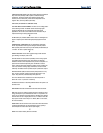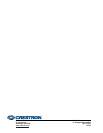
Commercial Lighting Design Guide Appendix E
Doc 4775A 101
resultant light distribution produced by this shape provides reduced
glare, better light control, and is considered to have greater aesthetic
appeal
PARACUBE: A metallic coated plastic louver made up of small squares.
Often used to replace the lens in an installed troffer to enhance its
appearance. The paracube is visually comfortable, but the luminaire
efficiency is lowered. Also used in rooms with computer screens
because of their glare-reducing qualities
PHOTOCELL: A light sensing device used to control luminaires and
dimmers in response to detected light levels
PHOTOMETRIC REPORT: A photometric report is a set of printed data
describing the light distribution, efficiency, and zonal lumen output of a
luminaire. This report is generated from laboratory testing
POWER FACTOR: The ratio of the AC Volts x Amps through a device to
the AC wattage of the device. A device such as a ballast that measures
120 Volts, 1 Amp, and 60 Watts has a power factor of 50% (Volts x Amps
= 120 VA, therefore 60 Watts/120 VA = 0.5). Some utilities charge
customers for low power factor systems
PREHEAT: A type of ballast/lamp circuit that uses a separate starter to
heat up a fluorescent lamp before high voltage is applied to start the
lamp
Q
QUAD-TUBE LAMP: A compact fluorescent lamp with a double twin tube
configuration
R
RADIO FREQUENCY INTERFERENCE (RFI): Interference to the radio
frequency band caused by other high frequency equipment or devices in
the immediate area. Fluorescent lighting systems generate RFI
RAPID START (RS): The most popular fluorescent lamp/ballast
combination used today. This ballast quickly and efficiently preheats
lamp cathodes to start the lamp. Uses a "bi-pin" base
ROOM CAVITY RATIO (RCR): A ratio of room dimensions used to quantify
how light will interact with room surfaces. A factor used in illuminance
calculations
REFLECTANCE: The ratio of light reflected from a surface to the light
incident on the surface. Reflectances are often used for lighting
calculations. The reflectance of a dark carpet is around 20%, and a
clean white wall is roughly 50% to 60%
REFLECTOR: The part of a light fixture that shrouds the lamps and
redirects some light emitted from the lamp
REFRACTOR: A device used to redirect the light output from a source,
primarily by bending the waves of light.
RECESSED: The term used to describe the doorframe of a troffer where
the lens or louver lies above the surface of the ceiling.
REGULATION: The ability of a ballast to hold constant (or nearly constant)
the output watts (light output) during fluctuations in the voltage feeding
of the ballast. Normally specified as +/- percent change in output
compared to +/- percent change in input.
RELAY: A device that switches an electrical load on or off based on small
changes in current or voltage. Examples: low voltage relay and solid
state relay
RETROFIT: Refers to upgrading a fixture, room, or building by installing
new parts or equipment
REVERSE PHASE DIMMING: Rather than attempting to restrict the
amplitude of the current flowing through a lamp, as in other forms of
dimming, reverse phase control works by switching off the end part of
each cycle of the alternating current supply
S
SELF-LUMINOUS EXIT SIGN: An illumination technology using phosphor-
coated glass tubes filled with radioactive tritium gas. The exit sign uses
no electricity and thus does not need to be hardwired
SEMI-SPECULAR: Term describing the light reflection characteristics of a
material. Some light is reflected directionally, with some amount of
scatter
SHIELDING ANGLE: The angle measured from the ceiling plane to the line
of sight where the bare lamp in a luminaire becomes visible. Higher
shielding angles reduce direct glare. It is the complementary angle of the
cutoff angle. (See: CUTOFF ANGLE)
SPACING CRITERION: A maximum distance that interior fixtures may be
spaced that ensures uniform illumination on the work plane. The
luminaire height above the work plane multiplied by the spacing criterion
equals the center-to-center luminaire spacing
SPECULAR: Mirrored or polished surface. The angle of reflection is equal
to the angle of incidence. This word describes the finish of the material
used in some louvers and reflectors
STARTER: A device used with a ballast to start (preheat) fluorescent
lamps
STROBOSCOPIC EFFECT: Condition where rotating machinery or other
rapidly moving objects appear to be standing still due to the alternating
current supplied to light sources. Sometimes called "strobe effect."
T
T12 LAMP: Industry standard for a fluorescent lamp that is 12 one-
eighths, one inch in diameter. Other sizes are T10 and T8 lamps
TANDEM WIRING: A wiring option in which a single ballast is shared by
two or more luminaires. This reduces labor, materials, and energy costs.
Also called "master-slave" wiring.
THERMAL FACTOR: A factor used in lighting calculations that
compensates for the change in light output of a fluorescent lamp due to
a change in bulb wall temperature. It is applied when the lamp-ballast
combination under consideration is different from that used in the
photometric tests.
THREE-WIRE ANALOG POWER DIMMING: Three-wire control is a line-
voltage phase-control dimming method. Along with Hot and Neutral, the
dimming signal is communicated via a third wire called Dimmed Hot. All
three wires are rated Class 1 and can be run within the same conduit.
TRIGGER START: Type of ballast commonly used with 15-watt and 20-
watt straight fluorescent lamps
TROFFER: The term used to refer to a recessed fluorescent light fixture
(combination of trough and coffer)




